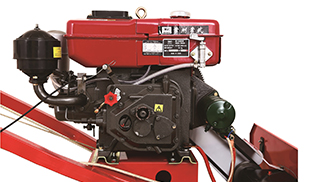Aug . 09, 2024 02:05 Back to list
Understanding the Sounds Produced by a Warped Brake Drum and Their Implications for Vehicle Safety
Understanding the Sound of a Warped Brake Drum
When it comes to vehicle maintenance and safety, the brake system is one of the most crucial components. Among the various parts that make up this system, the brake drum plays a significant role, especially in drum brake systems commonly found in older vehicles, rear brakes, and some lighter commercial vehicles. A warped brake drum is not just a mechanical issue; it also produces distinctive sounds that can signal potential problems. In this article, we will explore what a warped brake drum sounds like, the implications of these sounds, and how to address the issue.
The Characteristics of a Warped Brake Drum Sound
A warped brake drum typically produces a range of sounds that can indicate its compromised state. One of the most common sounds associated with a warped brake drum is a rhythmic thumping or pulsating noise when the brakes are applied. This occurs because the uneven surface of the warped drum causes the brake shoes to make intermittent contact with the braking surface.
Additionally, drivers may notice a scraping or grinding noise, particularly when slowing down. This sound is often generated when the brake shoes wear unevenly against the warped surface, and it may indicate that the wear pattern is causing metal-to-metal contact. In more severe cases, a squealing or squeaking noise might also emerge, usually because of friction caused by the brake pads or shoes that are no longer properly aligned due to the warp.
Detecting Other Symptoms
While the sound produced by a warped brake drum is a telltale sign, it is usually not the only symptom. Other indicators include a noticeable decrease in braking performance, such as longer stopping distances, which can be both dangerous and alarming. Vibration through the brake pedal is another common symptom; as the driver applies pressure to the brakes, they may feel a pulsating sensation, indicating that the drum is not spinning evenly.
what does a warped brake drum sound like

The Importance of Addressing the Issue
Ignoring the sounds of a warped brake drum can lead to more severe problems. Prolonged driving with faulty brake components can lead to further damage to the braking system, including brake shoes, wheel cylinders, and even the brake master cylinder. Additionally, the compromised braking can lead to safety risks, including longer stopping distances and vehicle instability, which can be particularly perilous in emergency situations.
Steps for Resolution
If you suspect that your vehicle has a warped brake drum, it is essential to address the issue promptly. The first step is to schedule an inspection with a qualified mechanic. They will typically conduct a visual examination of the brake components and may even remove the drum for a closer look. If the drum is indeed warped, the mechanic may recommend resurfacing it or, in some cases, replacing it entirely.
Once the issue is resolved, maintenance is key to preventing future problems. Regular brake inspections, proper wheel alignment, and timely replacements of worn brake components will ensure that you maintain a safe and functioning brake system. Additionally, staying attuned to the sounds your vehicle makes can help you catch issues early, allowing for timely repair and enhancing your overall safety on the road.
Conclusion
Understanding the sounds associated with a warped brake drum is essential for every driver. By recognizing the symptoms and taking prompt action, you can maintain your vehicle's safety and performance. Always prioritize regular maintenance and listen to what your car is trying to tell you; it may just save your life.
-
ROR Web Development: Build Fast, Scalable, Secure Apps
NewsAug.17,2025
-
Scania Brake Drums: OEM Quality for Optimal Safety & Durability
NewsAug.16,2025
-
R.V.I: Advanced Remote Visual Inspection for Precision
NewsAug.15,2025
-
Discover HYUNDA: Innovative Vehicles, Equipment & Solutions
NewsAug.14,2025
-
R.V.I: Unlock Advanced Insights & Real-time Performance
NewsAug.13,2025
-
Kamaz Brake Drum: Durable & Reliable for Heavy Duty Trucks
NewsAug.12,2025
